Newcomers Expanding Powercat Appeal: Solar Power Offers Versatility
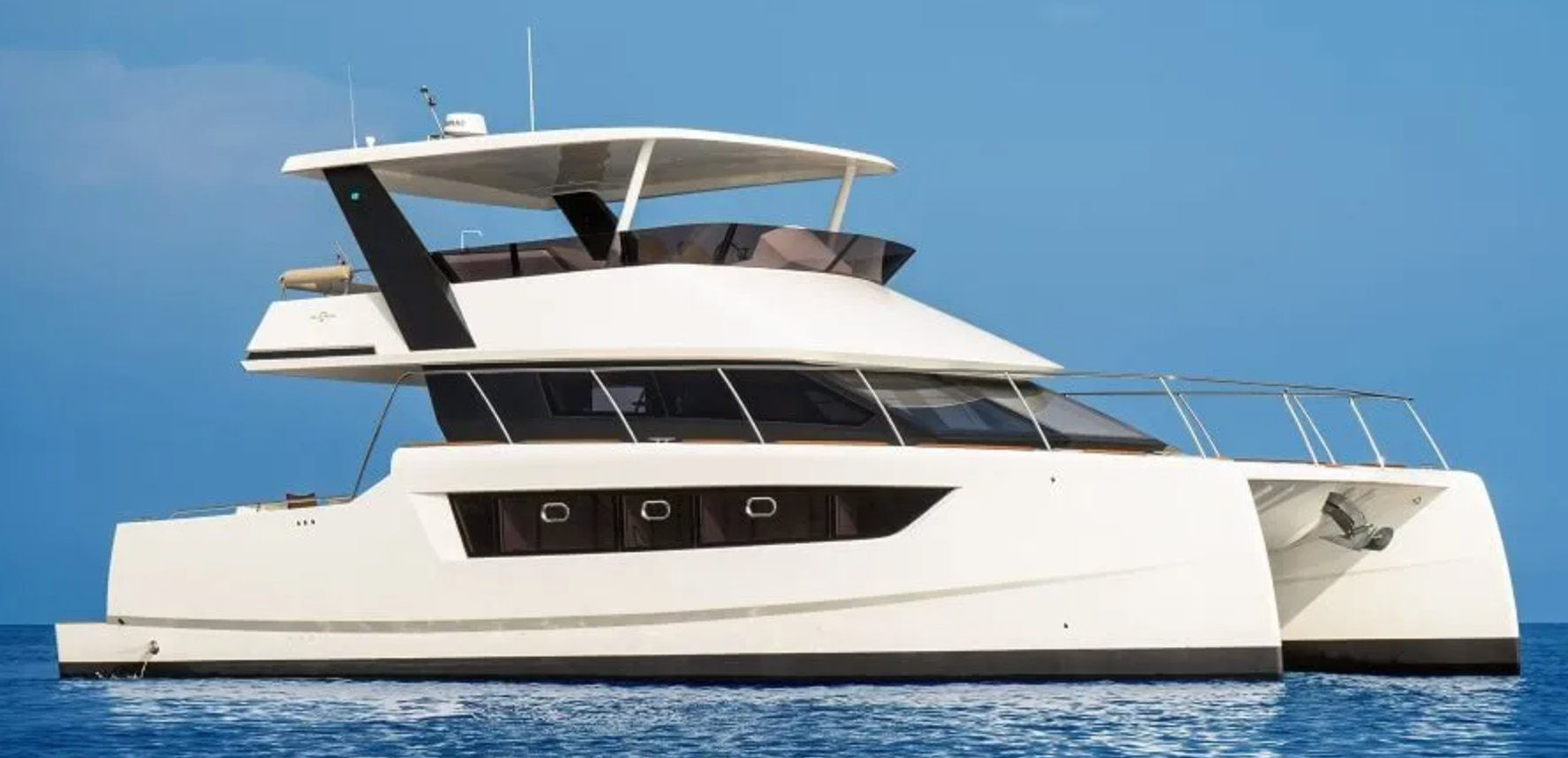
Solar-powered and solar-assisted models are helping grow the appeal of catamarans, while monohull yacht builders are also entering the power-cat sector.
In Thailand, PMG Shipyard’s models include the new Cora Cat 48, which can be built to a range of certifications from Europe’s CE to UK-based Lloyd’s, Australia’s AMSA and the National Marine Manufacturers Association (NMMA) in the United States. Features include a large flybridge with the yacht’s primary helm station, while a second helm with joystick and screen can be added in the salon upon request.
Built on a fast displacement hull, the current design has evolved with a light-filled interior and more space. The expanded main-deck salon features larger windows, while a flat foredeck covered in sun pads allows for larger forward cabins.
The standard layout of the Cora Cat 48 includes a large aft cockpit for alfresco dining and a bar counter that connects with the aft galley. The salon can benefit from extra space if a lower helm is not fitted. Accommodation options include a four-cabin layout featuring forward cabins with window-facing berths or a three-cabin layout with a master suite in the port hull. The Cora Cat 48 will be distributed by Multihull Solutions and the first model will be available to view in mid-2023.

Owned by Philippe Guenat, the 224,000 sq. ft. (20,800 sq. m) PMG Shipyard has expertise in the field of solar technology and offers solar-assisted designs that can power onboard systems including air conditioning without use of a generator. Hybrid or electric propulsion can also be included on certain models.
“Our catamarans are built for and used in the Asia-Pacific region, so all our systems must be extremely reliable as there may not be marinas every 20 nautical miles if repairs are needed,” Guenat says.
“For the same reason, we like to have diesel engines for power and security, although we have long experience with hybrid and electric power and propulsion. Our catamarans are designed for long voyages in sometimes rough seas, so safety is our priority.”

Guenat also stresses that PMG Shipyard’s range of power cats don’t use balsa coring. Instead the yard uses vinylester resin that resists osmosis. Furthermore, the vinylester is insulated from the hull by half an inch of airspace, ensuring it always stays dry.
The Swiss owner believes another attraction of its power cats is their value because they’re built in a country with lower labor costs. Its location east of U-Tapao Rayong Pattaya International Airport lets Asia-based buyers easily visit the shipyard during construction.
“We’ve had clients who visit several times a year,” says Guenat. “They feel more connected to the project and can work closely on customizing the boat.”
Silent Expansion
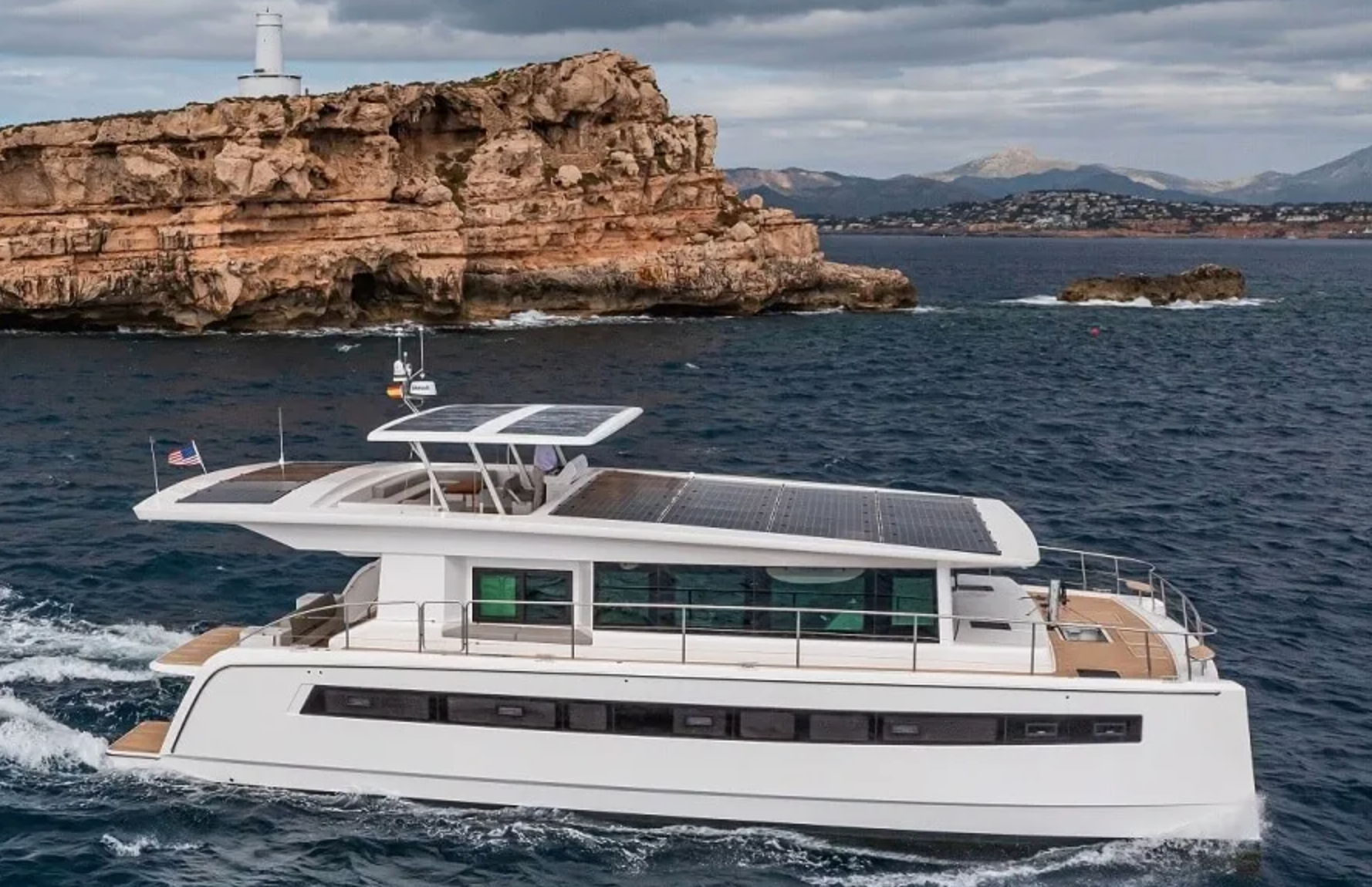
Since 2019, PMG Shipyard has also doubled as a production facility for the Silent 60, the smallest model in Austrian-owned Silent-Yachts’ current range of solar-electric catamarans. She succeeds the 64 and 55 production models.
In Fano, Italy, Silent-Yachts builds the Silent 60 and 80 series at its Adriatic coast shipyard that has which has 237,000 sq. ft. (22,000 sq. m) of covered facilities plus a similar amount of outdoor space. Silent cats are also being built in Turkey following a recent partnership with the VisionF shipyard, as the companies collaborate on the Silent VisionF82, an upcoming solar-assisted hybrid version of the existing VisionF 80.
The first Silent 60 was launched in Thailand last year before heading to Europe, while recent launches include the model’s first Front Exit version. It features a salon door to the foredeck instead of a full-beam owner’s cabin forward on the main deck.
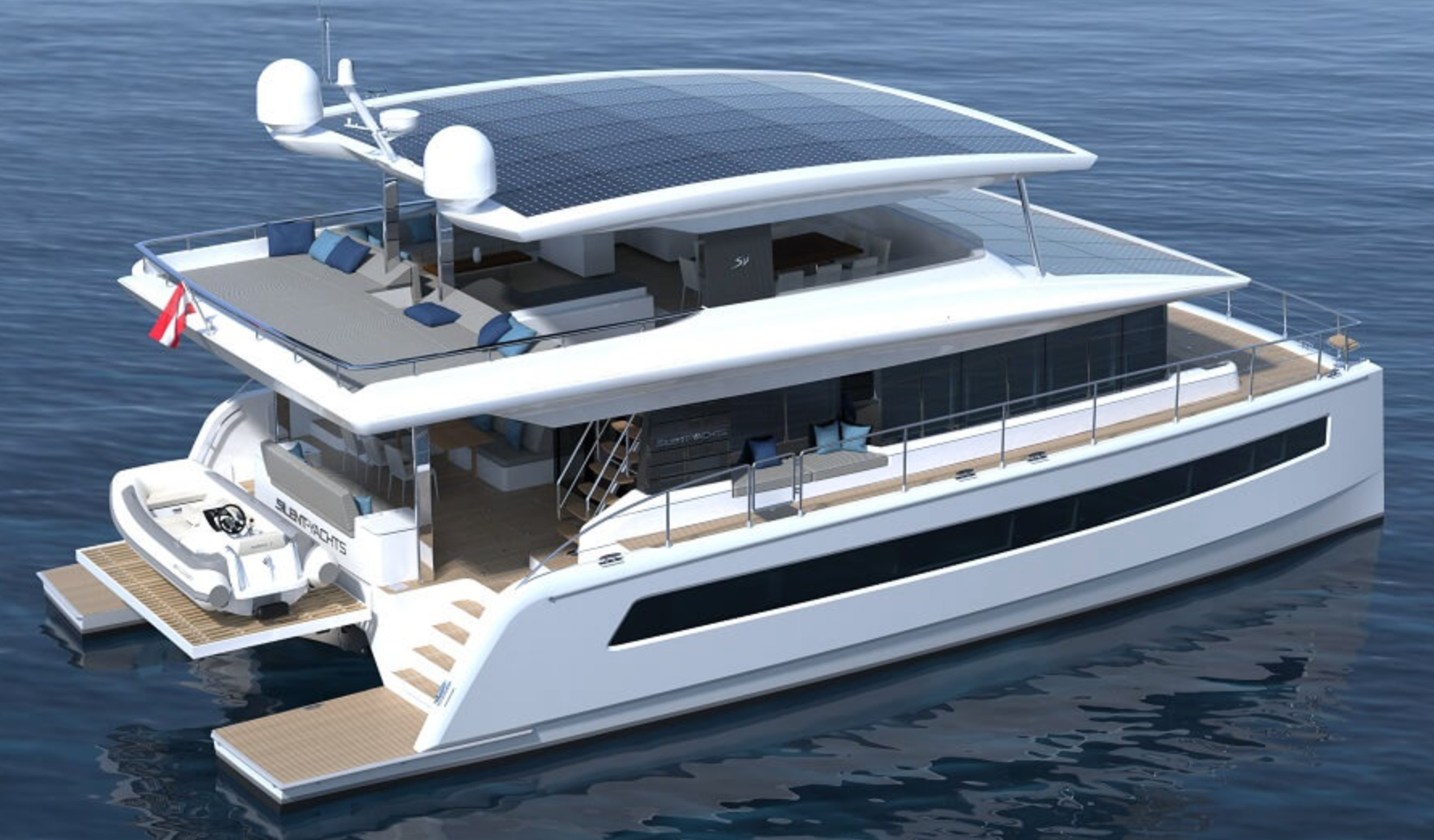
Subtle Improvements
Most subsequent orders for the 60 series have been for the Silent 62 3-Deck, which features longer transoms and a much larger flying bridge that can be open or partially enclosed. In addition, the model’s design has evolved and now includes a raised cockpit plate that creates flush flooring from the cockpit through the main-deck interior, instead of the slightly raised lounge seen on the initial units.
In addition to having fewer steps from the cockpit up to the side decks, the new design has created cabins with more headroom and new storage space under the cockpit for items like a tender, water toys or even a Laser sailboat.
Michael Köhler, founder and CEO of Silent-Yachts, says he has also applied these improvements to the Silent 80, with the first unit set to be launched later this year, potentially in time for the Cannes Yachting Festival.
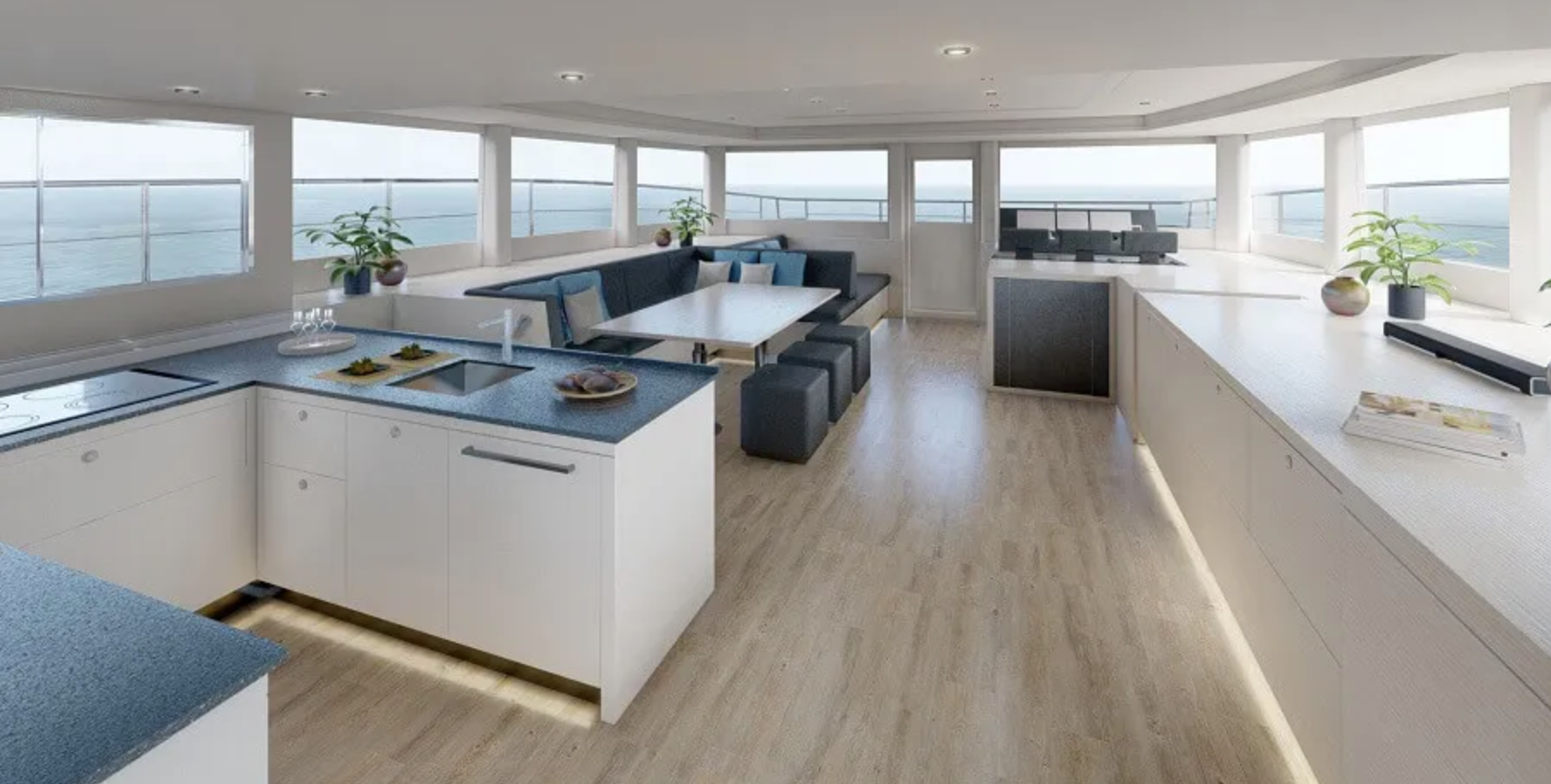
“We’ve had great feedback on the first units of the Silent 60 and even a video of some people entering the interior and saying, ‘I wouldn’t have expected that,’ because they were surprised a 60-footer (18.29 m) could be so big inside,” says Köhler, who launched his Solarwave 46 solar-electric catamaran in 2009 after years of testing solar-powered propulsion.
“However, I’m happy to change the design of boats, so they’re continually being upgraded, without looking at the financial consequences,” he said. “If we can improve something, we change it on the next units. We’re continually optimizing the design through construction.”
Solar Appeal Expands
Founded in 2020, Alva is a new brand in the solar-electric catamaran sector and has announced sales of seven units of its Ocean Eco 60 and an Ocean Eco 90 EX. The company recently revealed designs for the Ocean Eco 60 Coupé, a cruiser model.

The German-owned company builds in Turkey’s Antalya Free Zone and plans to introduce the first Ocean Eco 60 at the 2023 Palma International Boat Show. This will be followed by the Ocean ECO 90 EX at the Cannes Yachting Festival later in the year.
“Antalya is one of the best shipbuilding hubs in the world and the shipbuilding culture is heavily focused on craftsmanship,” says Milan Henn, Alva’s head of design. “We can take advantage of the amazing infrastructure and facilities here to maximize our series yacht production.”
Alva’s catamarans feature a distinctive design including extensions from the flying bridge sides that join the bow corners, creating a semi-protected foredeck.
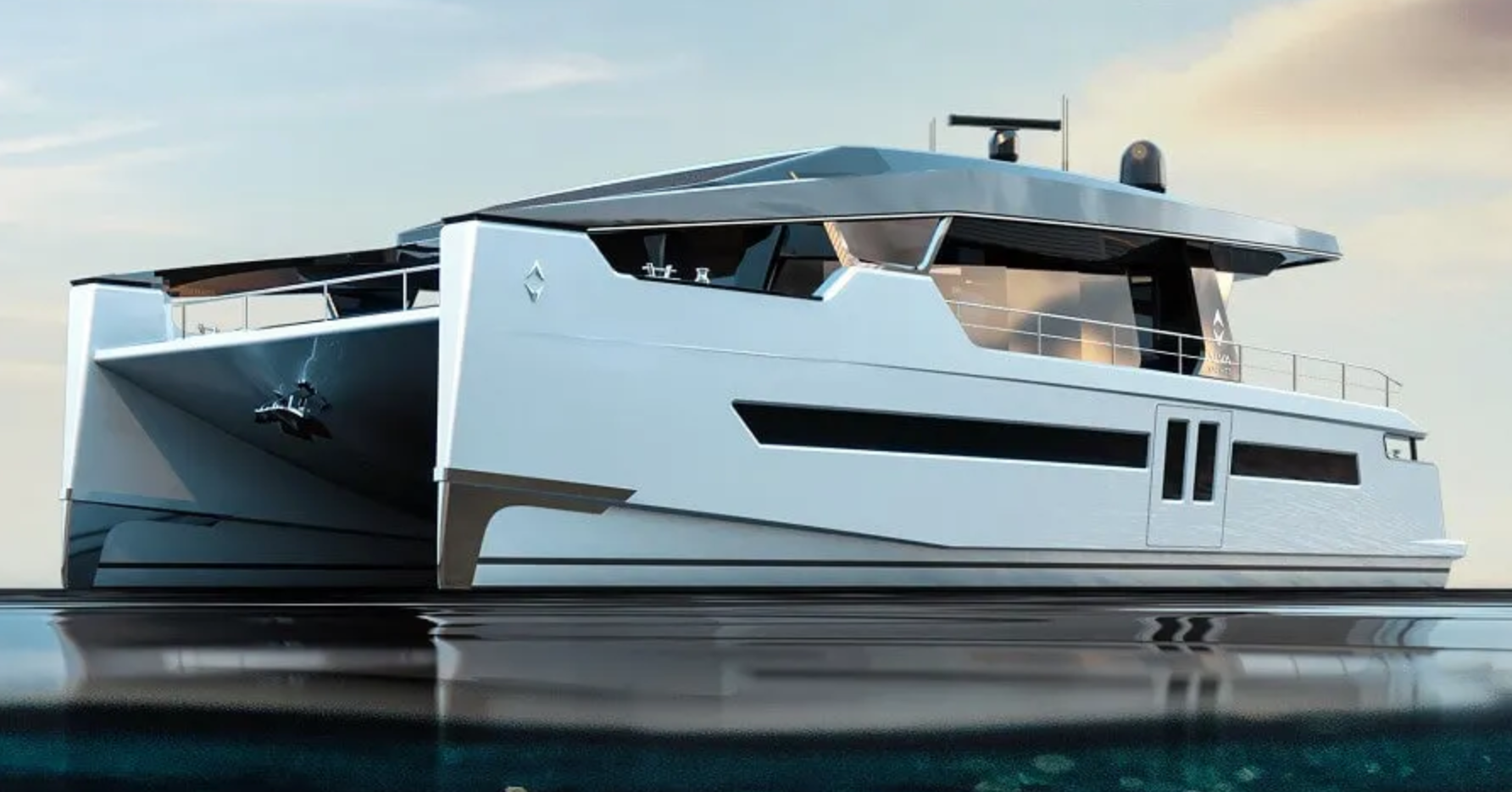
“The exterior design is heavily influenced by automotive trends and underlines futuristic technology,” Henn says. “Breaking yachting conventions is very much what we try to do with the design of our yachts, and this can be seen in the very disruptive exterior.”
Monohull Brands Coming
Meanwhile, Prestige is the first of the world’s major monohull motor yacht builders to move into the power catamaran sector with its M-Line series. At Cannes in September, the French builder will stage the world premiere of the M48, a 48’6” (14.78 m) power cat that doesn’t compete with fellow Groupe Beneteau builder Lagoon, which is focused on larger models with its Sixty 7 and Seventy 8.
The M48 is designed by Italy’s Garroni Design — Prestige’s long-time collaborator — and features naval architecture by Frenchman Philippe Briand. Tall and slim, it offers 1,400 sq. ft. (130.06 sq. m) of living space yet has a beam of just 19’8” (5.99 m), which is more than 2’ (.61 m) wider than the brand’s flagship X70 monohull but much thinner than similar-length or slightly shorter power cats on the market.
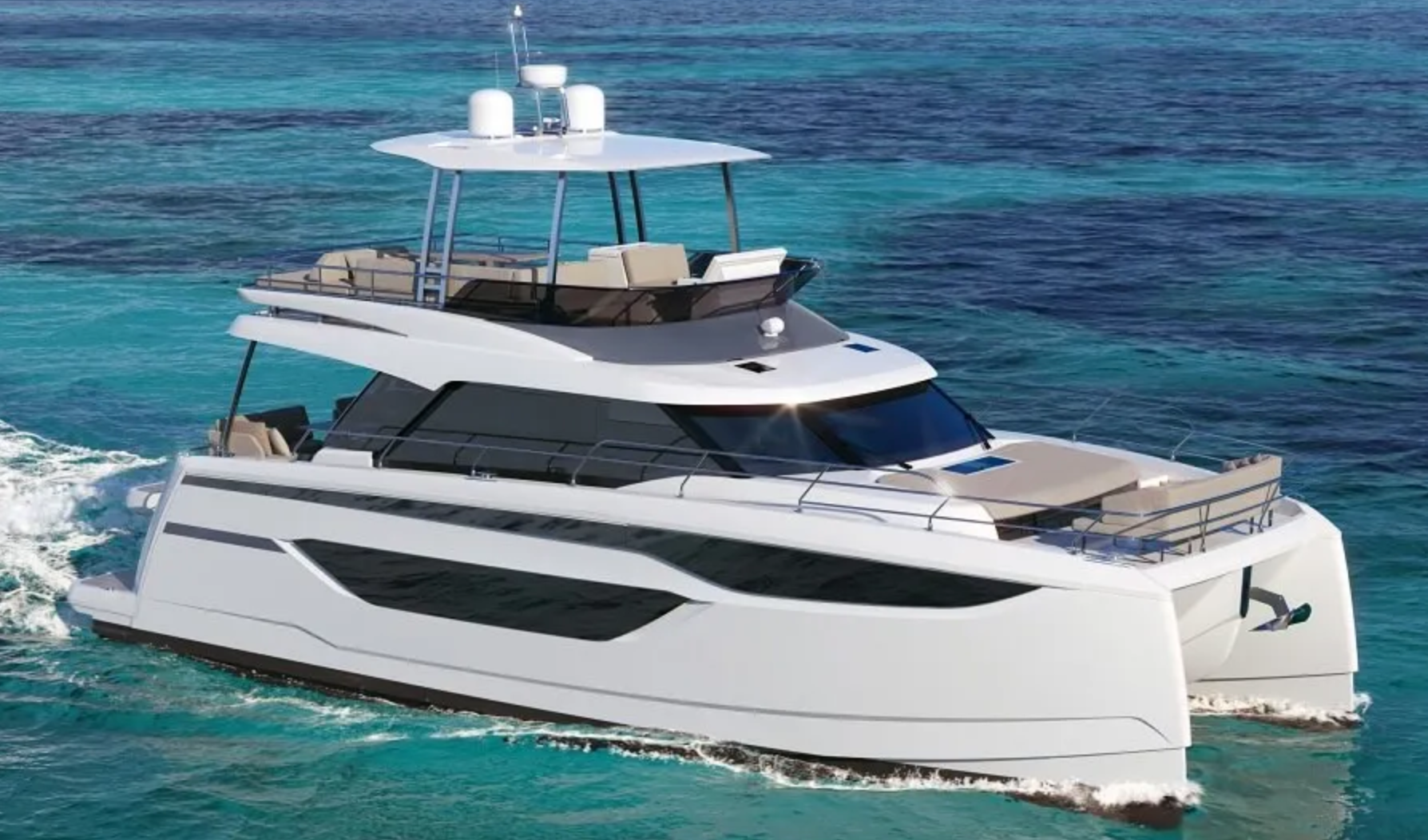
Innovative features include full-beam accommodations on the lower deck that can have a full-width master suite or two cabins forward as well as two cabins side by side midships, each with raised window-facing beds. Other notable features include an aft cockpit with facing L-shaped Roda sofas and tables separated down the centerline, as well as a foredeck with an aft-facing sofa in the bow.
Fitted with twin 325-hp Volvo D4s, the M48 is expected to have a top speed of 20 knots, fuel consumption of 21.3 gph (80 lph) at 17 knots and a range of 600 nautical miles at eight knots.
More monohull brands are coming. Bluegame, Sanlorenzo’s sister company, announced at the 2019 Cannes Yachting Festival that it would be entering the power-cat market. More recently, it revealed details of the BGM75 that will be powered by a new Volvo hybrid powertrain.

Zuccon International Project and Studio Lissoni, long-time collaborators with Sanlorenzo, designed the exterior and interior respectively, while Briand handled the naval architecture of a yacht featuring a full sandwich-infused hull and carbon-reinforced hull and decks.
As the number of power-cat owners increase, so will the number of builders in this market. Keep an eye out, because there are more to come.